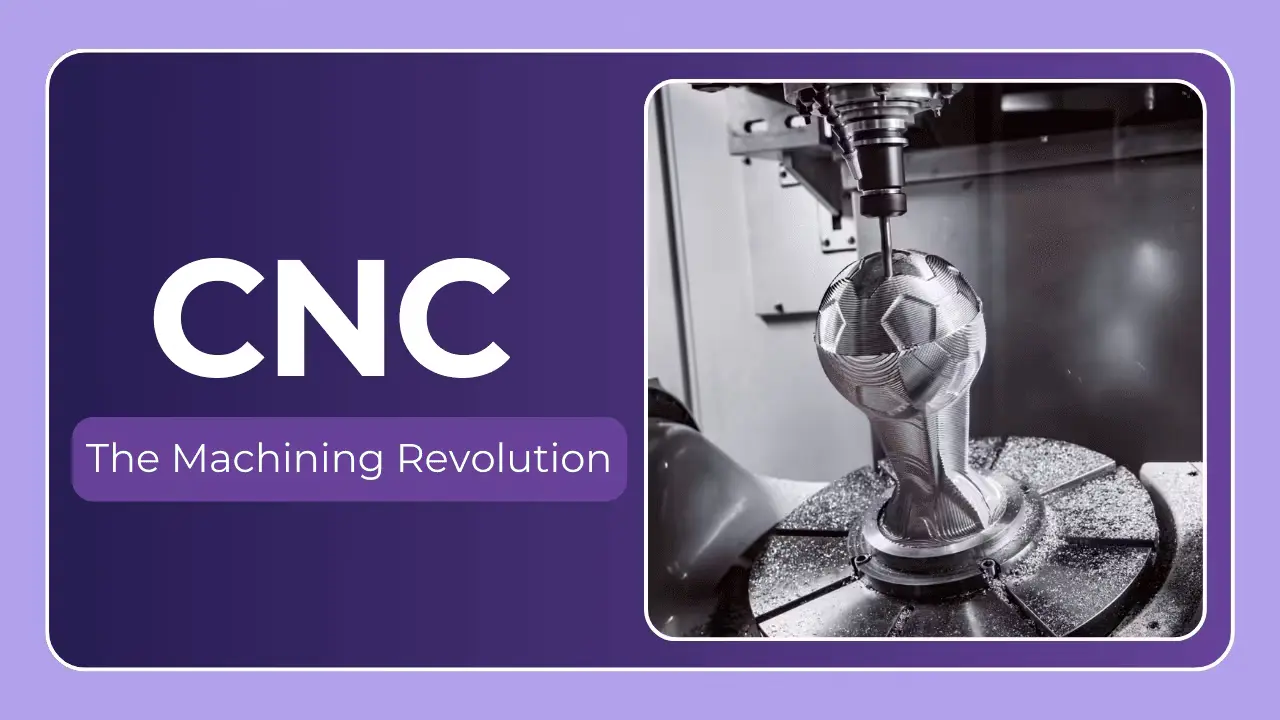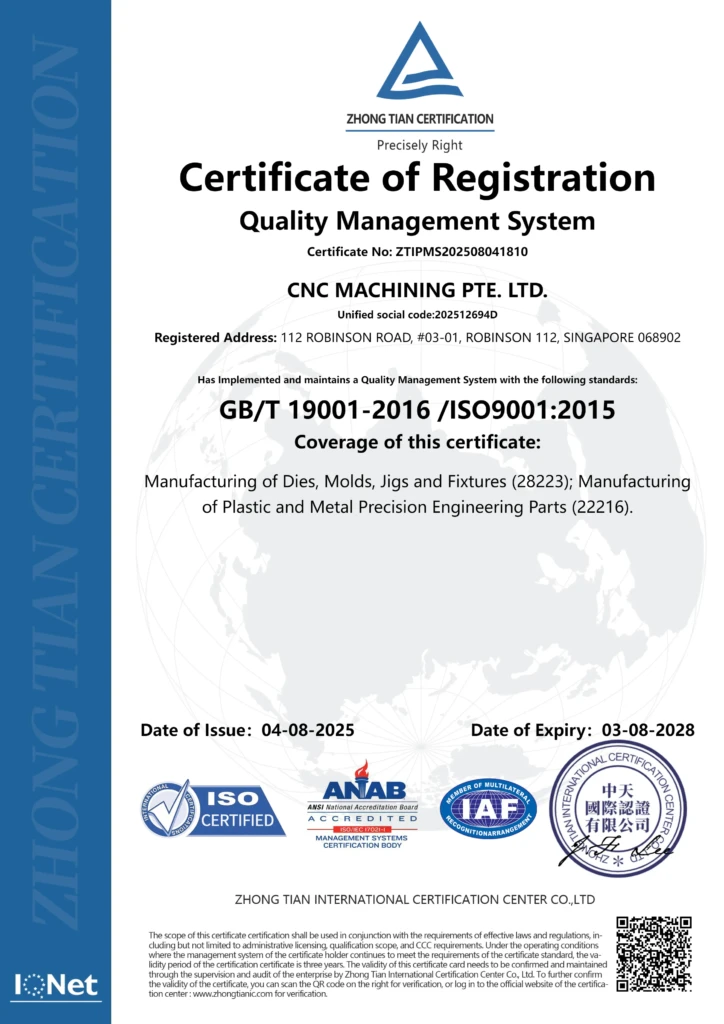Decoding the Costs of CNC Machining: A Comprehensive Guide
CNC machining has revolutionized manufacturing, offering unparalleled precision, repeatability, and versatility. But understanding the costs associated with it can feel like navigating a complex maze. Whether you’re a seasoned engineer, a budding entrepreneur, or simply exploring manufacturing options, this guide will break down the factors influencing CNC machining costs, helping you budget effectively and make informed decisions. We’ll cover everything from material selection to programming complexities, and even touch on finishing processes. At CNC MACHINING PTE. LTD, a leading five-axis CNC machining manufacturer in Singapore, we frequently work with clients to optimize designs for cost-effectiveness, and we’re sharing that expertise here.
What Drives the Price Tag? A Deep Dive into Cost Components
CNC machining costs aren’t a single number; they’re a sum of several interconnected elements. Here’s a detailed look at each:
1. Material Costs: The Foundation of Your Part
This is often the most significant cost driver. The material you choose dramatically impacts the final price.
- Material Type: Aluminum alloys are generally more affordable than stainless steel, which in turn is cheaper than titanium or exotic alloys like Inconel. Plastics offer a lower cost entry point but have different performance characteristics.
- Material Grade: Within each material type, different grades exist. Higher-grade materials with specific properties (e.g., 7075-T6 aluminum vs. 6061-T6) will be more expensive.
- Material Form: Raw material comes in various forms: billets, bars, tubes, sheets, and castings. Billets and bars generally cost more than castings, but castings may require additional machining to achieve desired tolerances.
- Quantity: Larger orders often benefit from bulk material discounts.
- Sourcing: Where the material is sourced from can also impact cost, considering import duties and transportation.
2. Machining Time: The Core of the Process
The time it takes to machine your part directly correlates to labor and machine operating costs. Several factors influence machining time:
- Part Complexity: Intricate designs with tight tolerances, deep pockets, and complex curves require more machining time. Five-axis machining, while offering greater flexibility, often takes longer to program and execute than simpler three-axis operations.
- Number of Features: Each hole, slot, thread, or surface finish adds to the overall machining time.
- Part Size: Larger parts generally take longer to machine than smaller ones, even with similar complexity.
- Tooling: The number of tool changes required during machining impacts time. Efficient toolpath planning minimizes these changes.
- Machine Setup: Setting up the machine, including fixturing and calibrating, is a crucial (and billable) part of the process.
- Machine Type: While all CNC machines perform similar functions, their speed and capabilities vary. A high-speed machining center will generally be faster than a standard mill.
3. Programming & Setup Costs: The Brains Behind the Operation
Don’t underestimate the cost of preparing the CNC machine for production.
- CAD/CAM Software: Sophisticated CAD/CAM software is essential for creating toolpaths and simulating the machining process. The cost of this software is factored into the overall price.
- Programming Expertise: Skilled CNC programmers are needed to translate your design into machine-readable code (G-code). Their time is a significant cost component. Complex parts require more programming effort.
- Fixture Design & Fabrication: Fixtures securely hold the workpiece during machining. Custom fixtures may need to be designed and fabricated, adding to the cost. Universal fixtures are cheaper but may not be suitable for all parts.
- Tooling Selection: Choosing the right cutting tools for the material and features is critical. Specialized tools can be expensive.
4. Labor Costs: The Human Element
While CNC machines automate much of the process, skilled labor is still essential.
- Machine Operators: Operators monitor the machine, load/unload parts, and make minor adjustments.
- Quality Control Inspectors: Inspectors verify that the finished parts meet the specified tolerances and quality standards.
- Engineers: Engineers may be involved in design review, process optimization, and troubleshooting.
5. Finishing & Post-Processing: Adding the Final Touches
Often overlooked, these steps can significantly impact the final cost.
- Deburring: Removing sharp edges and burrs.
- Surface Finishing: Anodizing, plating, painting, polishing, or other surface treatments.
- Heat Treatment: Strengthening or softening the material.
- Assembly: If your part requires assembly with other components.
- Inspection & Certification: Providing detailed inspection reports and certifications.
Cost Estimation: A Practical Approach
While a precise quote requires a detailed design and specifications, here’s a general breakdown of how costs are typically allocated:
| Cost Component | Typical Percentage of Total Cost |
|---|---|
| Material | 30-60% |
| Machining Time | 20-40% |
| Programming & Setup | 10-20% |
| Labor (Operator/QC) | 5-15% |
| Finishing/Post-Processing | 5-20% |
Example Scenario: A Simple Aluminum Bracket
Let’s consider a simple aluminum bracket, 100mm x 50mm x 5mm, with a few drilled holes.
- Material: 6061-T6 Aluminum Billet – $10
- Machining Time: 30 minutes – $45 (assuming a shop rate of $1.50/minute)
- Programming & Setup: 1 hour – $60
- Deburring: $5
- Total Estimated Cost: $120
Now, imagine adding a complex curved feature and tighter tolerances. The machining time could easily double, and the programming time could increase significantly, pushing the cost well above $200.
Strategies for Cost Optimization
- Design for Manufacturability (DFM): Simplify your design to reduce machining complexity. Avoid unnecessary features and tight tolerances.
- Material Selection: Choose the most cost-effective material that meets your performance requirements.
- Tolerance Analysis: Specify realistic tolerances. Tighter tolerances increase machining time and cost.
- Quantity Discounts: Order larger quantities to benefit from bulk material discounts and reduced setup costs per part.
- Value Engineering: Work with your CNC machining provider to identify potential cost savings without compromising quality.
- Consider Alternative Processes: For very high-volume production, consider alternative manufacturing processes like die casting or injection molding.
Conclusion: Partnering for Success
CNC machining costs are multifaceted, but understanding the key drivers empowers you to make informed decisions. At CNC MACHINING PTE. LTD, we believe in transparent pricing and collaborative partnerships. We don’t just machine parts; we offer solutions. Our team of experienced engineers can provide DFM feedback, optimize your designs for cost-effectiveness, and deliver high-quality precision parts quickly and efficiently.
Don’t hesitate to reach out to us with your project requirements. We’re committed to providing competitive pricing and exceptional service. Customize your precision parts now at the best price! Let us help you turn your ideas into reality.




